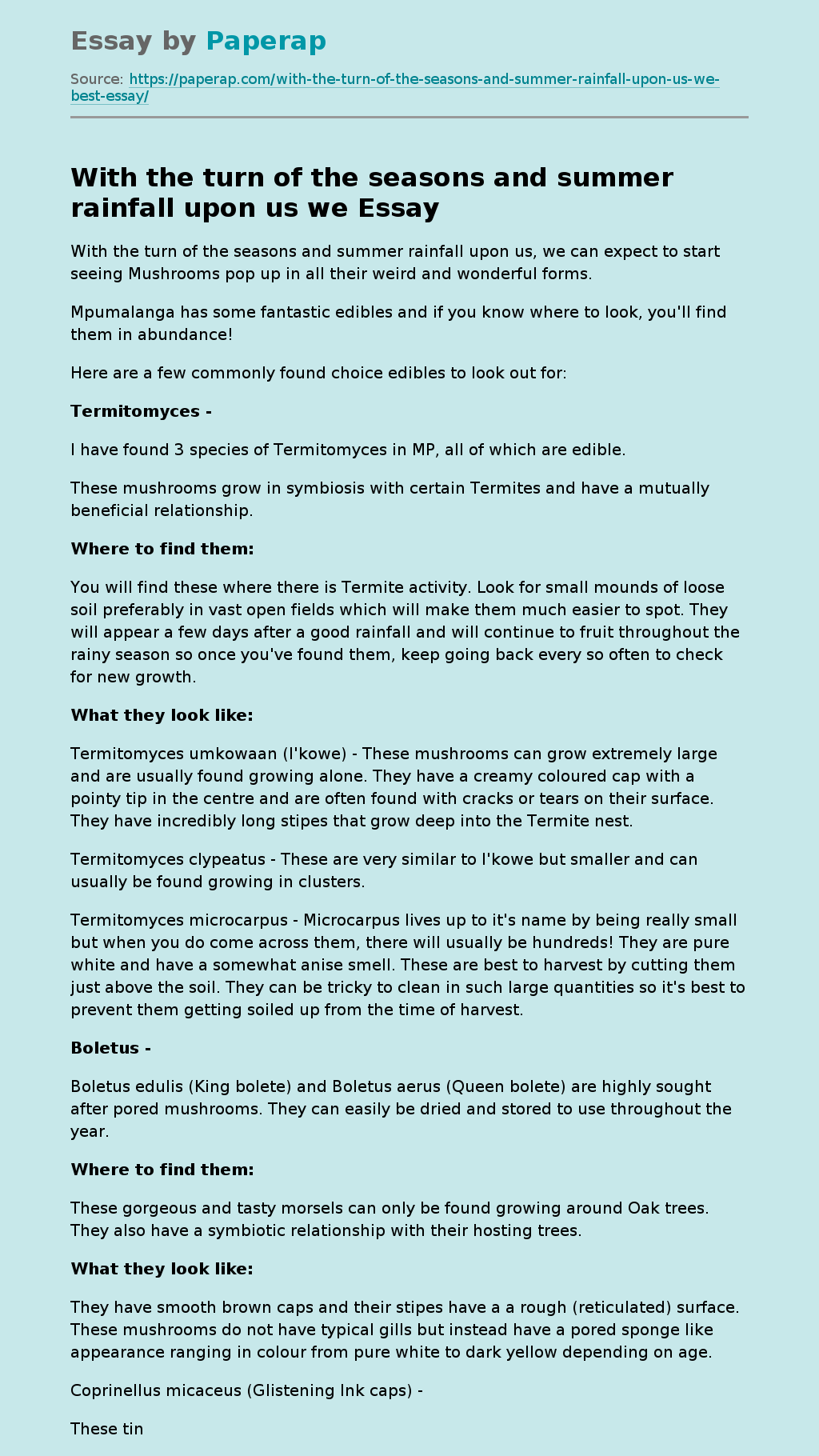With the turn of the seasons and summer rainfall upon us we
With the turn of the seasons and summer rainfall upon us, we can expect to start seeing Mushrooms pop up in all their weird and wonderful forms.
Mpumalanga has some fantastic edibles and if you know where to look, you’ll find them in abundance!
Here are a few commonly found choice edibles to look out for:
Termitomyces –
I have found 3 species of Termitomyces in MP, all of which are edible.
These mushrooms grow in symbiosis with certain Termites and have a mutually beneficial relationship.
Where to find them:
You will find these where there is Termite activity. Look for small mounds of loose soil preferably in vast open fields which will make them much easier to spot. They will appear a few days after a good rainfall and will continue to fruit throughout the rainy season so once you’ve found them, keep going back every so often to check for new growth.
What they look like:
Termitomyces umkowaan (I’kowe) – These mushrooms can grow extremely large and are usually found growing alone.
They have a creamy coloured cap with a pointy tip in the centre and are often found with cracks or tears on their surface. They have incredibly long stipes that grow deep into the Termite nest.
Termitomyces clypeatus – These are very similar to I’kowe but smaller and can usually be found growing in clusters.
Termitomyces microcarpus – Microcarpus lives up to it’s name by being really small but when you do come across them, there will usually be hundreds! They are pure white and have a somewhat anise smell.
These are best to harvest by cutting them just above the soil. They can be tricky to clean in such large quantities so it’s best to prevent them getting soiled up from the time of harvest.
Boletus –
Boletus edulis (King bolete) and Boletus aerus (Queen bolete) are highly sought after pored mushrooms. They can easily be dried and stored to use throughout the year.
Where to find them:
These gorgeous and tasty morsels can only be found growing around Oak trees. They also have a symbiotic relationship with their hosting trees.
What they look like:
They have smooth brown caps and their stipes have a a rough (reticulated) surface. These mushrooms do not have typical gills but instead have a pored sponge like appearance ranging in colour from pure white to dark yellow depending on age.
Coprinellus micaceus (Glistening Ink caps) –
These tiny mushrooms are always found growing in clusters. ‘Ink Cap’ mushrooms cover a vast array of species all of which are edible. The Common Ink Cap (Coprinopsis atramentaria) contains a chemical called Coprine and should not be ingested with alcohol as it has similar effects to antabuse.
Where to find them:
These are wood eating fungi. Search near rotting hardwood tree stumps or underground tree roots.
What they look like:
Thin fragile stipes with caps ranging in colour from white to light brown. Micaceus has a somewhat shimmer on their cap surface which are velum remnants.
South Africa is far behind when it comes to wild food foraging and it’s time this changes. There is an abundance of great and nutritious food sources in our range and MP has no shortage of these.
We have a local mushroom Identification forum on FaceBook (Mushrooms of Mpumalanga). If you are ever in doubt what species you have found or are curious and would like to learn more, this will be the place to get your answers.
For guided mushroom tours in and around the Sabie area –
Contact Kelly@ 071 679 0643
With the turn of the seasons and summer rainfall upon us we. (2019, Nov 17). Retrieved from https://paperap.com/with-the-turn-of-the-seasons-and-summer-rainfall-upon-us-we-best-essay/

